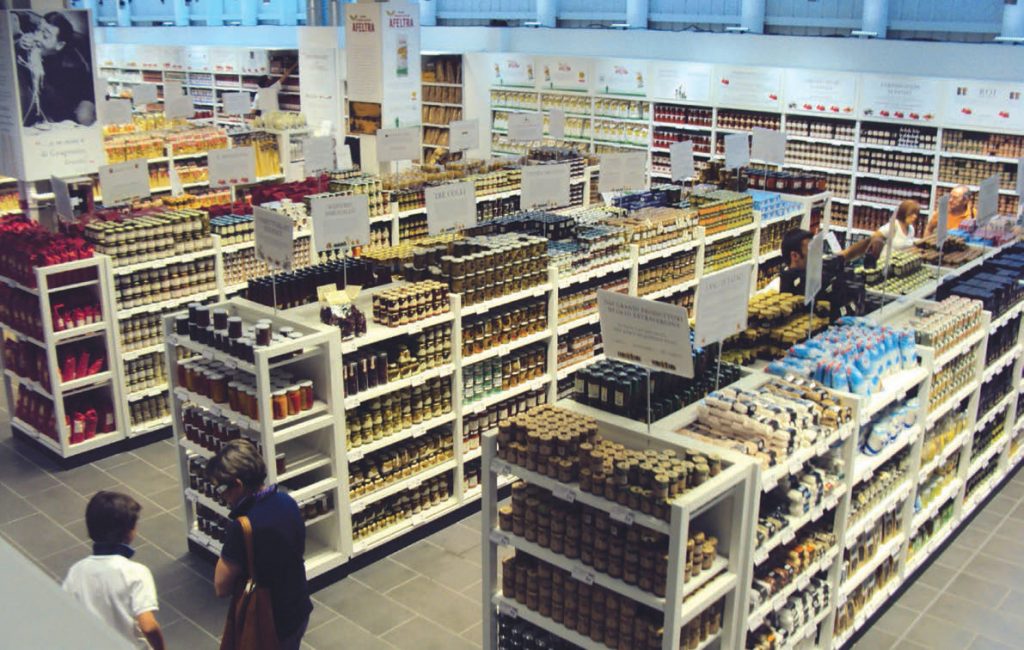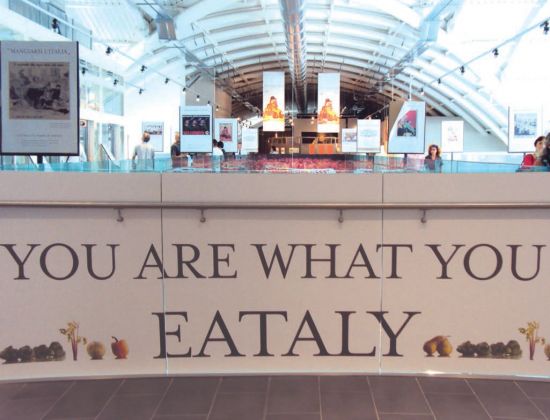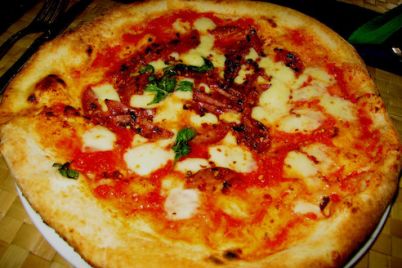Last June at the opening of Eataly’s newest store, Eataly Rome, CEO and owner Oscar Farinetti proclaimed, “Welcome to the biggest place in the world dedicated to Italian food. Our aim is to make it the third most-visited place after the Coliseum and the Vatican Museums.” He dubbed it Eatiland.
Farinetti’s contagious energy and unwavering optimism permeates throughout the concept store. Eataly’s manifesto begins with “We’re in love with food,” and it ends with, “Our goal is to have you as our customer for a lifetime.” A sign stretches across the floor space and teases, “You are what you Eataly.” With clever wordplay and a promise of quality food and tantalizing culinary experiences for the savvy hungry omnivore, the land of food is transformed into a gastronomic shopping mall.
The company has 2,300 employees and projected worldwide sales this year of 300,000,000 euro. That’s a lot of dough. Future store openings include Chicago, Los Angeles, Sao Paolo, and Toronto. Spectacle is a big part of the Eataly experience where food is a beautifully displayed and carefully marketed commodity. Farinetti is on to something. He knows that around the world people crave Italian food. He knows that few people under the age of forty cook from scratch. And we all know that when our nonni leave this world, arrivederci homemade ravioli and salami.
Worse still for Italians, who place a high value on local fresh food, is the realization that the meal on their kitchen table comes from far-flung places, making quality difficult to guarantee. Recently, the daily La Repubblicaran a story about Romanian-made bread that travels through Friuli and the Veneto and is sold as Italian bread. Meanwhile, the state-run RAI 3 television station ran an exposé on triple-thick tomato paste from China, which arrives daily in shipping containers via ports in Naples and Salerno, is watered down to double thickness, and passed off as a “Made in Italy” product. Last year the papers were full of the shocking home-grown mozzarella di bufala swindle: mozzarella actually made with Bolivian milk, powdered milk, and frozen Eastern European milk.
This is where Eataly steps in. Eataly is capitalism’s answer to capitalism’s destruction of the traditional food supply chain. Farinetti’s recipe for success is deliciously ingenious. It starts with a pledge of quality. Eataly has partnered with Carlo Petrini’s Slow Food Foundation, and it guarantees that the origin of everything in the store is traceable. Although Eataly’s products are not all organic and not all from small producers, they are of high quality, and wherever possible, locally sourced.
In New York Farinetti connected with celebrity chefs Mario Batali, Joe Bastianich and Lidia Bastianich, principals in Batali & Bastianich Hospitality Group – a multi-million dollar corporation with over thirty restaurants in addition to food labels.
With an estimated seven million visits in its first year of operation, generating over $70,000,000 in sales, and an equally successful second year, it is clear that New Yorkers and tourists alike hunger for more. In January 2013, Eataly announced it will set sail with a new partner – MSC Cruises, the fourth largest cruise operator in the world. Passengers on the MSC Presioza will cruise the Mediterranean with two Eataly restaurants on board.

Photo: Elizabeth Cinello
The 59 year-old Farinetti is the public face of Eataly, comfortable in the limelight. He blogs on the Huffington Post, gives television interviews and appears on Italian shows to talk about the economy and politics. He cultivates a public image of a CEO with a conscience. He says Eataly donates one third of its revenue to charity. A company principle is that no one’s salary is more than five times the salary of the lowest paid employee, which sounds unlikely but might be possible if you don’t count bonuses, stock options, and other corporate reward plans. He points out that Eataly creates jobs and employs young people, especially in Italy, where high chronic youth unemployment is a piaga – a festering sore.
In a unique way Eataly infuses its marketing with a philosophical language, as you would expect from a CEO/philosopher. Farinetti assigns each of his stores valori metafisici (metaphysical traits): Beauty for Rome and Harmony for Turin. Eataly’s post-modernist Manifesto of Harmony muses, “Let’s convince ourselves that having certainties is a state of unhappiness while doubt is a source of happiness and serenity.” Doubt, “la metafisica del maybe,” is New York’s assigned trait. Eataly goads Americans: “The customer is not always right. Neither is Eataly. From this marvellous doubt, our harmony will be born.”
Generally, people are happy to be part of the Eataly spectacle. Food is a connector, a mediator of relationships; it’s an integral part of identity. It feels good – cooking and eating, sitting at a table with good company and sharing food. Eataly sells you this experience in a neatly hyped package that’s hard to resist. Chef Batali calls Eataly a “food temple.”
Eataly’s critics point out that the gastronomic conglomerate, like any big box store with its own supply chain, threatens the little guy. In Rome, worried vendors at the old Testaccio Market hope that their recent move to a newer nearby location will improve their prospects.
According to a report prepared for the city of Toronto’s Economic Development and Culture department in 2010, the city’s food and beverage production industry is second only to Los Angeles in North America, beating out Chicago and New York for employment, a significant standing when you consider Hogtown is smaller in population size. It is worth noting that Eataly has targeted these same cities for its North American expansion. The report singles out Toronto’s appetite for ethnic foods, specialty foods such as kosher and Halal; foods that meet dietary restrictions such as gluten-free and dairy-free; and pre-prepared foods. It notes that the growing demand for local food has prompted even Walmart to commit to stocking its Ontario stores with 30 percent local produce.
Will the arrival of Eataly have an impact on Toronto’s diverse food market, where the majority of food suppliers are small to medium-sized companies? What will Eataly’s arrival mean for Toronto’s St. Lawrence Market, for high-end grocery stores like Pusateri’s, or for Italian stores like Diana’s Grocery, Fiesta Farms, or Lady York, which have a wide range of clients?
Will Eataly compete with the city’s popular urban farmers’ markets where shoppers can connect directly with farmers, without a corporate middleman? Roscoe Handford is the manager for The Stop’s spirited Farmers’ Market at the Wychwood Barns. She says, “People should not be worried about competition; focus on good food is always a good thing.” Most people agree. Toronto’s table has room for everybody. At the very least, Eataly will serve up food for thought. Buon appetito.
Elizabeth Cinello is an Accenti contributor at large.




